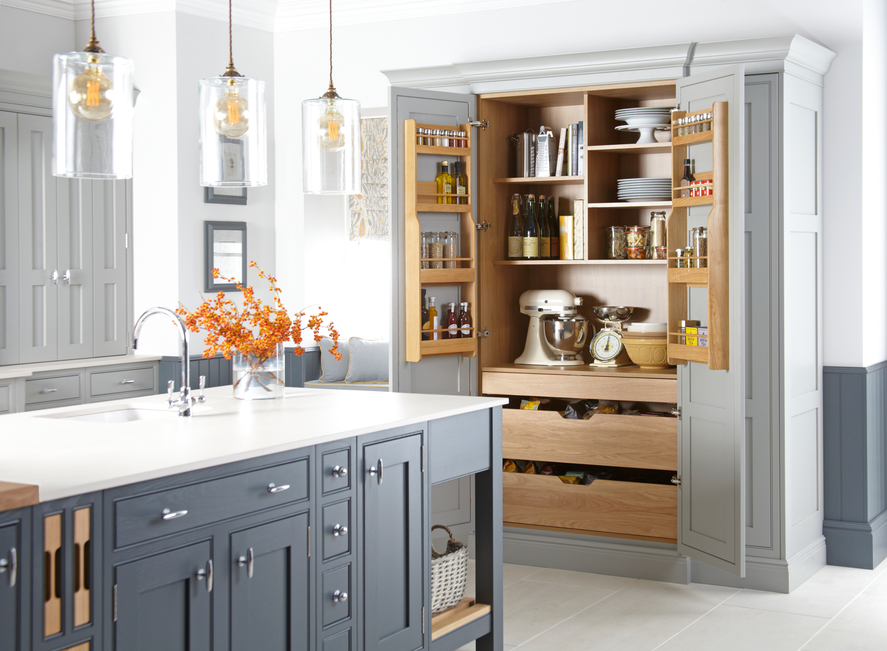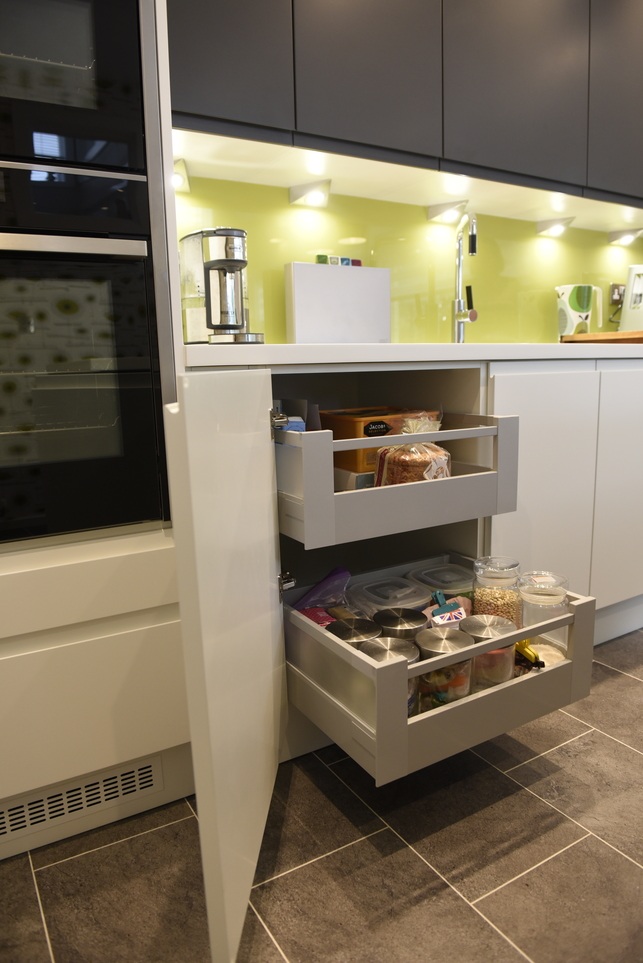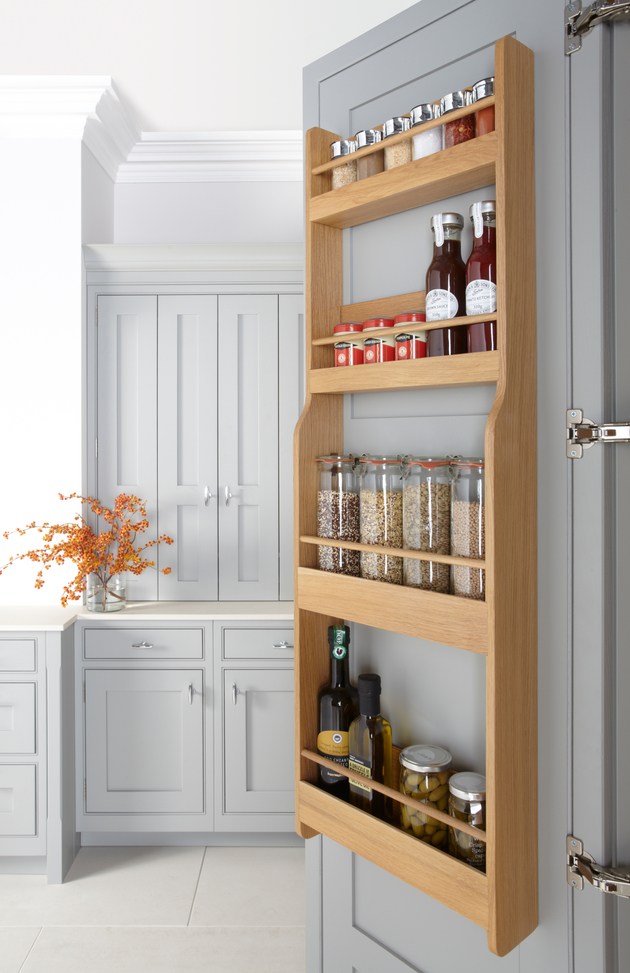Interior Design
Planning the perfect kitchen storage in 5 simple steps
27.11.2017


In the world of kitchen design, compartmentalising is something of a fine art. Modern kitchen storage solutions are becoming more and more intelligent, attractive, impressive and practical, making now a better time than ever to revise your kitchen storage plan for the future. Indeed, since many of these contemporary designs in kitchen storage aim to maximise efficiency, a refresh to your own kitchen is likely to free up a lot of space and improve your work ethic on the whole – two birds, one stone! Perhaps the most tempting benefit is the fact that less clutter makes the kitchen a more pleasant room in which to cook, eat, relax and socialise.
However, it’s important to remember that kitchen storage isn’t purely about efficiency and ergonomics, as it can also present an excellent opportunity to make an aesthetic statement and improve the visual appeal of your space. You should be aiming to find a balance between functionality and appearance, but we know this is often easier said than done. So in this post, we outline some of the main considerations when planning an update to your kitchen storage. We hope that you can find some inspiration and clarity in the following suggestions!


The kind of storage you install into your kitchen will depend largely on the amount of items you have to store and which items you have the most of. For instance, if you have a large collection of cookware, you might want incorporate some deep drawers built specifically to hold larger items. If you pride yourself on keeping a generous supply of food, why not look toward installing a pantry (whether it be pull-out or walk-in)?
Those with a large amount of kitchenware will need to know in advance what kind of storage their kitchen requires. So for the sake of efficiency, we recommend creating an inventory of all the items in your kitchen before making any snap decisions about storage options. You wouldn’t want to end up with too much or too little storage in relation to the items that need to be stored.
The way in which your kitchen is used determines the most appropriate kind of kitchen storage, as well as the location of individual units. In other words, during the planning stage you should be picturing yourself cooking, cleaning, preparing food and washing dishes in your kitchen. As such, your storage plan should take into account some of the following considerations:
Quite often, your storage requirements turn out to be rather obvious: units used to store crockery and cutlery should be placed near the dishwasher or sink, and a drawer built specifically for holding baking trays should be installed next to the oven.


If there is a problem that you keep encountering in the day-to-day operation of your kitchen, your current storage arrangement may be the root cause. If the type of storage you have and the location in which certain items are stored is repeatedly causing problems, you may benefit from installing new storage solutions that provide… well, solutions. It’s important to identify these issues (if any) when planning for your storage revamp.
You don’t need to be raking around the back of a dark cupboard looking for those clunky pots and pans: some easily accessible pull-out shelves would present a more logical (and less stressful) option! Households with a penchant for green living could incorporate a pull-out recycling station under the kitchen sink, eliminating the need for two separate bins that take up too much floor space. Have a serious think about how to make your kitchen easier and simpler on a daily basis with your storage space, and plan your purchases accordingly.
The layout and design of your kitchen as it stands will influence the kind of storage you choose. A smaller kitchen decked out with a milieu of different storage units could end up being more cluttered and complicated than necessary. On the other hand, larger kitchens might complement more spacious options such as open shelving and pantries.


Likewise, the style of your kitchen should be reflected in the designs and finishes that you choose for each storage unit. Traditional kitchens benefit from runs of wooden cabinetry with intricate mouldings and ornate handles, while more modern kitchens are best served by sleek cabinets which blend seamlessly into the design. Your storage contributes a lot to your kitchen’s overall aesthetic, so don’t neglect this great opportunity to define your style!
You probably don’t need a snazzy storage solution for items that you rarely use or functions that you rarely perform. Quite like one of those late-night TV infomercials, certain kitchen storage units sometimes look impressive and revolutionary at first, but it would soon become apparent that they are practically useless. Before making a big purchase just stop and think, “do we really need a brand new pull-out wine rack?”
Try not to get lost in the initial appeal of intelligent storage designs – while it is of course an added bonus if your kitchen storage looks impressive, you have to prioritise functionality over everything else. You wouldn’t want your storage solution to become a storage problem!
Whatever your kitchen storage requirements are (both stylistically and practically speaking), Burnhill Kitchens will plan and design a bespoke kitchen tailored to your specific needs. If you are looking for a new kitchen then feel free to get in touch with a member of our team today.